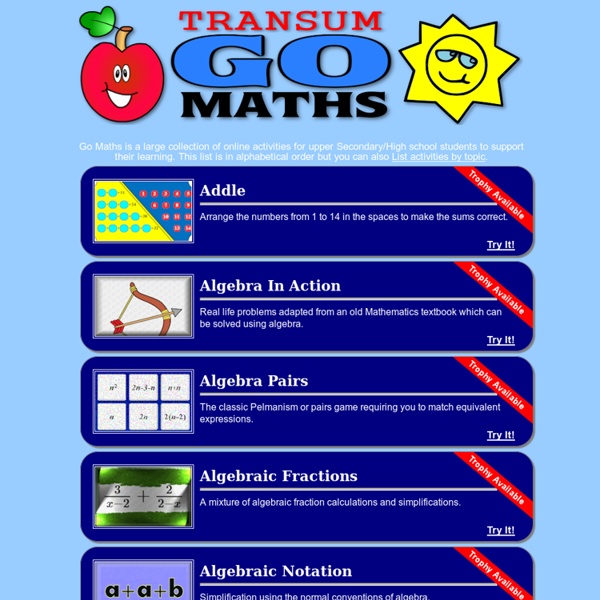



Free Printable Worksheets for Preschool through Sixth Grade Free math games for kids at Fun4theBrain! Page NEW 1 2 3 View All Lucy is ready to dress the actor and actress from the lates movie, Zomie Prom! Thanks for all the help from her assisstants, Z. Agicthein and S. Snowy is having tons of fun this winter, but he is a little bit lonely when all the kids go home in the evening. The parents from this town decided that it was too easy getting the candy at the door, so they made an obstacle course around the neighborhood. Security Officer Hubert could use your help down by the docks. Come fight 'tis new platform battle featurin' a ruckas band 'o pirates! Muddy lives in the marsh in Murb. Sasha delivers all the orders for Murb Grocery. Tory Tools has opened his shop! Those crazy penguins from Cone Crazy are back again in a new game - Flurry of Flavors. You have gotten a job as an marine photographer! The crazy crows have stolen Lucky's coins and luck. There is a large group of reindeer that want to get some delicious cookies from your Reindeer Café. It is lunchtime at the Alien Academy.
Free Math Worksheets Fact Family Worksheets Welcome to the fact family worksheets page at Math-Drills.com! This page includes Fact family worksheets including addition and subtraction relationships, and multiplication and division relationships. Addition and Subtraction Relationships Once students understand the relationship between addition and subtraction, subtraction becomes less of a mystery, and they are able to complete more complex problems. Multiplication and Division Relationships Multiplication and division have an inverse relationship, so if a student knows that 9 × 8 = 72 then they should also know the answer to 72 ÷ 8.
Free Printable Math Worksheets Math Games on-line, timed Basic Facts addition, subtraction and multiplication quizzes (Good for any grade - improve basic skills) Math Brain Teaser (Grade 3 and up) Mathematical Magic Trick (practice your 2 times tables and 5 times tables) Mathematical Magic Trick - Calculator (practice using a calculator) Free Printable Math Worksheets It's normal for children to be a grade below or above the suggested level, depending on how much practice they've had at the skill in the past and how the curriculum in your country is organized. Other Links: Although the activities are geared more to the preschool to kindergarten age group, adding one or two less challenging activities when learning the numbers can be a welcome break for the kids and can be given as a bonus activity for those who finish their work early. Visit DLTK's NumberBuddies for some fun tracer pages and crafts to reinforce learning.
Paper Models of Polyhedra GradeAmathelp.com: Free Math Help for All Degrees (Angles) We can measure Angles in Degrees. There are 360 degrees in one Full Rotation (one complete circle around). (Angles can also be measured in Radians) (Note: "Degrees" can also mean Temperature, but here we are talking about Angles) The Degree Symbol: ° We use a little circle ° following the number to mean degrees. For example 90° means 90 degrees One Degree This is how large 1 Degree is The Full Circle A Full Circle is 360° Half a circle is 180° (called a Straight Angle) Quarter of a circle is 90° (called a Right Angle) Measuring Degrees We often measure degrees using a protractor: The normal protractor measures 0° to 180°
The Thirty Greatest Mathematicians Click for a discussion of certain omissions. Please send me e-mail if you believe there's a major flaw in my rankings (or an error in any of the biographies). Obviously the relative ranks of, say Fibonacci and Ramanujan, will never satisfy everyone since the reasons for their "greatness" are different. Following are the top mathematicians in chronological (birth-year) order. Earliest mathematicians Little is known of the earliest mathematics, but the famous Ishango Bone from Early Stone-Age Africa has tally marks suggesting arithmetic. Early Vedic mathematicians The greatest mathematics before the Golden Age of Greece was in India's early Vedic (Hindu) civilization. Top Thales of Miletus (ca 624 - 546 BC) Greek domain Thales was the Chief of the "Seven Sages" of ancient Greece, and has been called the "Father of Science," the "Founder of Abstract Geometry," and the "First Philosopher." Apastambha (ca 630-560 BC) India Pythagoras of Samos (ca 578-505 BC) Greek domain Tiberius(?)